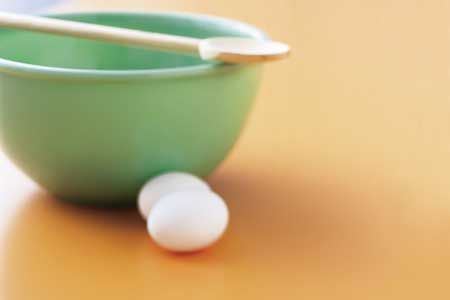The kitchen countertop has undergone a remarkable transformation over the past half-century. What was once merely a functional work surface has evolved into a central design element, as integral to the look and feel of our homes as the furniture we choose. This revolution in countertop design and materials has given homeowners an unprecedented array of options. In this guide, we’ll explore the journey of countertop innovation, current trends, and what the future holds for this essential kitchen feature.
The Evolution of Countertop Materials
The story of countertop evolution is one of expanding choices and improving technology. Countertop materials have changed significantly over the years, from basic laminates to today’s diverse array of options.
From Laminate to Luxury: A Historical Overview
In 1979, when This Old House first aired, plastic laminate dominated the countertop market. Brands like Formica and Wilsonart commanded an impressive 90% market share. These surfaces were affordable, easy to clean, and available in a variety of colors—including the now-iconic neon orange that graced the first This Old House TV project.
The 1980s saw the rise of solid surfacing materials. These synthetic marvels offered durability, stain resistance, and the ability to be molded into seamless pieces that incorporated sinks and backsplashes. Solid surfacing quickly gained popularity, challenging laminate’s dominance in the market.
The Rise of Granite and Engineered Stone
As the 1990s approached, granite began its meteoric rise to countertop stardom. Falling prices made this natural stone more accessible to homeowners, and its durability and unique patterns captured the imagination of designers and homeowners alike. Granite’s popularity soared, and it soon became the go-to choice for high-end kitchen renovations.
However, granite’s reign didn’t go unchallenged for long. Engineered stone, often referred to as quartz, emerged as a formidable competitor. Invented in Italy in 1977, engineered stone offers the look of natural stone with improved consistency and durability. Its rise in popularity marked a shift towards materials that combine the best of natural and manufactured properties.
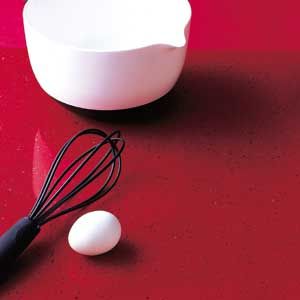
Modern Countertop Trends and Materials
Today’s countertop market is more diverse than ever, with a wide range of materials catering to every taste and budget. Let’s explore the current trends and popular materials shaping kitchen design in 2024.
Popular Materials in 2024
Granite continues to be a popular choice, prized for its natural beauty and durability. However, engineered stone has gained significant ground, appealing to those who want a more consistent look with lower maintenance requirements.
Other materials gaining traction include:
- Marble: For those seeking a classic, luxurious look
- Butcher block: Offers warmth and functionality
- Concrete: Provides a modern, industrial aesthetic
- Stainless steel: Ideal for professional-style kitchens
- Recycled glass: An eco-friendly option with unique visual appeal
Innovative Surfaces: Beyond Traditional Options
Innovation in countertop materials continues to push boundaries. Some exciting new options include:
- Ultra-compact surfaces: Materials like Dekton offer exceptional durability and heat resistance
- Porcelain slabs: Large-format porcelain provides a sleek look with minimal seaming
- Sintered stone: Engineered to be extremely durable and resistant to scratches and stains
- Backlit surfaces: Translucent materials that can be illuminated for dramatic effect
These innovative materials offer homeowners the opportunity to create truly unique and personalized kitchen spaces.
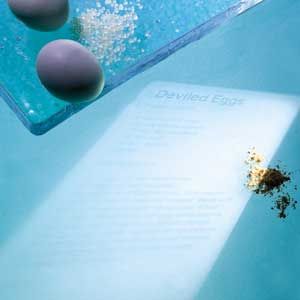
The Functionality Revolution in Countertops
Modern countertops are not just about looks—they increasingly incorporate advanced features to enhance functionality and user experience.
Smart Countertops: Technology Integration
The concept of “smart” kitchens has become a reality, with countertops playing a central role. Imagine a countertop that can:
- Display recipes and cooking instructions
- Provide wireless charging for devices
- Integrate scales and temperature sensors for precise cooking
- Offer touchscreen controls for kitchen appliances
While some of these features are still in development, they represent the exciting potential of future countertop technology.
Ergonomic Designs and Customization
Countertops are becoming more adaptable to individual needs. Features like integrated drain boards—grooves routed directly into the surface to channel water into the sink—are gaining popularity. Some manufacturers even offer countertops with hydraulic lifts, allowing users to adjust the height for maximum comfort during different tasks.
Sustainability and Eco-Friendly Countertop Options
As environmental concerns become increasingly important to consumers, the countertop industry is responding with more sustainable options.
Recycled and Upcycled Materials
Many manufacturers are now offering countertops made from recycled materials, such as:
- Post-consumer glass
- Reclaimed wood
- Recycled paper composite
- Salvaged stone
These options not only reduce waste but often create unique, eye-catching surfaces.
Low-Impact Manufacturing Processes
In addition to using recycled materials, some companies are focusing on reducing the environmental impact of their manufacturing processes. This includes:
- Using renewable energy in production facilities
- Implementing water recycling systems
- Reducing or eliminating harmful chemicals in the manufacturing process
- Sourcing materials locally to reduce transportation emissions
Choosing the Right Countertop for Your Home
With so many options available, selecting the right countertop can be overwhelming. Here are some factors to consider when making your decision.
Factors to Consider: Durability, Maintenance, and Cost
When choosing a countertop, it’s important to balance aesthetics with practical considerations:
- Resale value: Will your choice appeal to potential buyers if you plan to sell your home?
- Durability: How well will the material stand up to daily use?
- Maintenance: How much care does the surface require to keep it looking its best?
- Cost: What’s your budget for both materials and installation?
- Lifestyle: Do you need a surface that can withstand heavy cooking, or is low maintenance more important?
Mixing Materials: The Art of Surface Synergy
Many modern kitchens feature multiple countertop materials, a trend known as “surface synergy. ” This approach allows homeowners to optimize different areas of the kitchen for specific tasks. For example, you might choose:
- Granite for the main countertops
- Butcher block for a food prep area
- Marble for a baking station
- Stainless steel near the cooktop for heat resistance
Mixing materials can create visual interest while maximizing functionality in different areas of your kitchen.
Installation and Maintenance Best Practices
Proper installation and maintenance are essential for ensuring the longevity and beauty of your countertops.
DIY vs. Professional Installation
While some countertop materials can be installed by experienced DIYers, many require professional installation. Factors to consider include:
- The weight and size of the material
- The need for specialized tools and equipment
- The complexity of seams and edge treatments
- The risk of costly mistakes
For most homeowners, professional installation is the safest and most reliable option, especially for natural stone and engineered surfaces.
Preserving Your Countertop’s Beauty: Care Tips
Different materials require different care routines. However, some general tips apply to most countertops:
- Clean spills promptly to prevent staining
- Use cutting boards to protect the surface from scratches
- Avoid placing hot pots and pans directly on the countertop
- Follow manufacturer recommendations for cleaning products and methods
- Seal natural stone surfaces as recommended by the manufacturer or installer
The Future of Countertop Design
As technology advances and consumer preferences evolve, we can expect to see continued innovation in countertop design and functionality.
Emerging Technologies and Materials
Some exciting developments on the horizon include:
- Self-healing surfaces that can repair minor scratches and blemishes
- Antibacterial materials that inhibit the growth of harmful microorganisms
- Energy-generating countertops that harness sunlight or heat to produce electricity
- Advanced composites that mimic natural materials with enhanced durability
Predicted Trends for the Next Decade
Looking ahead, we can anticipate:
- Increased focus on sustainable and eco-friendly materials
- Greater integration of smart technology into countertop surfaces
- More personalized and customizable options
- Continued blending of aesthetics and functionality
A Visual History—and Future—of Countertops
See below for a variety of countertop materials that have been popular at different points over the last 50 years, and that we may be seeing more of in the years ahead. Numbers 1 through 5 are the “major players” while the remaining five examples could be upcoming stars.
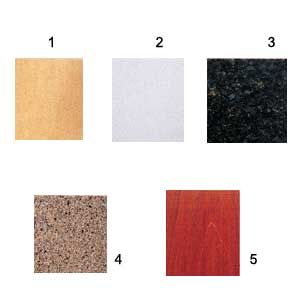
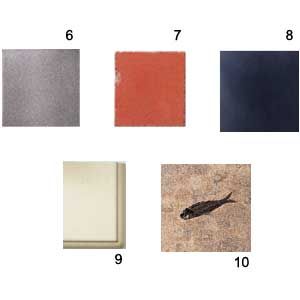
- Plastic laminate: Developed in 1913 as an industrial insulation material
- Solid surfacing: Still the number-one choice in bathroom counters
- Granite: New Hampshire may be the granite state, but most of the material mined in the U.S. comes from Minnesota
- Engineered stone: Invented in Italy in 1977, it’s often called quartz, which is one of its primary ingredients
- Wood: In the ’70s it was butcher block—now it’s teak, mahogany, and other exotic species
- Metal: Stainless steel is impervious, while copper, zinc, and bronze take on a “living” patina
- Concrete: Can be poured in place to any shape or color
- Paper: Super-fine sheets are glued together to 1-inch thickness
- Lava: Natural volcanic stone with a kiln-fired enamel glaze
- Fossil stone: Collected from a 50-million-year-old lake bed in Wyoming
